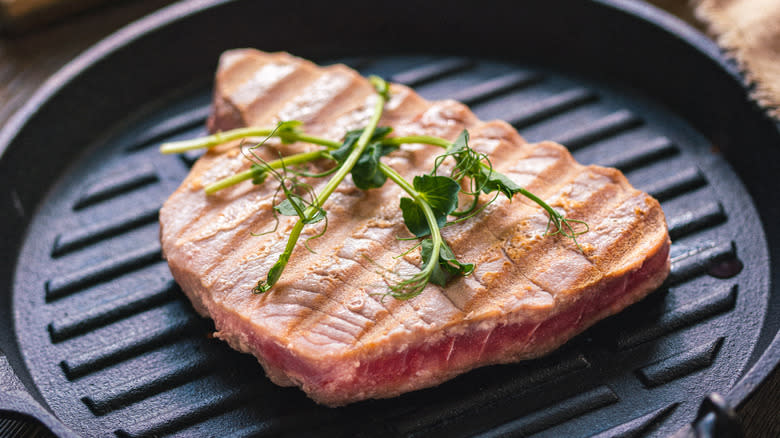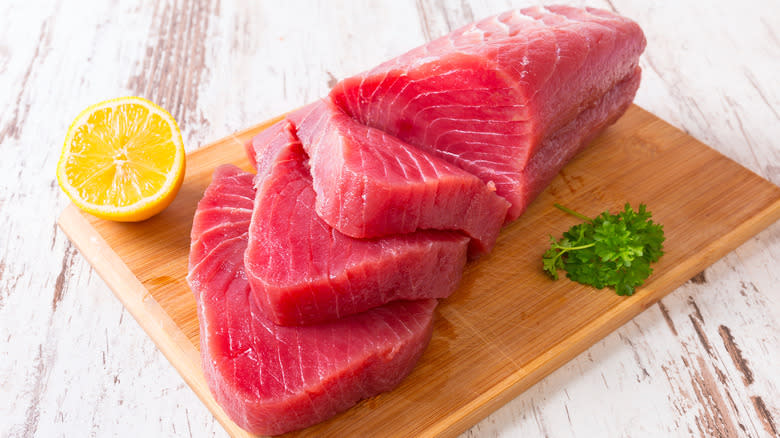Skip The Fancy Seasonings To Let The Natural Flavor Of Tuna Steak Shine

There is a school of thought that suggests if a meat is of a high enough quality, there is little need to season it with more than just salt and pepper. Do you really need a whole assortment of fancy seasonings that have the potential to overpower the natural flavors of the meat? The same logic applies to tuna steaks. In many cases, the simpler seasoning option is the better option because you really want to let the natural flavor of the tuna steak shine.
Overpowering seasonings don't have to be exotic or expensive, just excessive. Think of ones that are powerful, bold, and make statements. Heavier herbs, garlic, capers, olives, wasabi, and even soy sauce can mute the tuna's natural goodness. Though marinating tuna is a tip often suggested as a way of injecting flavor into the fish, you honestly don't need more than a bit of salt and some good olive oil to cook a perfectly simple tuna steak. Light garnishes like parsley or a squeeze of lemon juice provide freshness that doesn't overpower the tuna. Aim for seasonings that elevate and communicate with the fish.
Though it is considered a mild-flavored fish, tuna does have its own unique, sweet fattiness that can serve as a flavor base all its own. It really depends on what kind of tuna you plan on purchasing, because different types of tuna taste different from one another.
Read more: 15 Different Ways To Cook Fish
The Natural Flavors Of Different Tuna

Buying fresh tuna is almost like buying beef steak, with different animal breeds offering different flavors. The types of tuna you're most likely to find on the market are species such as albacore, yellowfin, bigeye, and bluefin tuna. Albacore is known for its pale complexion and relatively light taste, and can be more easily overpowered by seasonings. The latter three, however, have much more to offer flavor-wise
Yellowfin, bigeye, and bluefin are defined by their almost purple meat. They range in flavor and texture from mild and firm, to fatty and tender. Yellowfin tends to be the milder and more affordable of the three. It has a pronounced but not overpowering meaty flavor. Therefore, light seasonings work best with it. Bigeye and bluefin on the other hand have high fat content, leading to an extremely pronounced flavor and soft, tender texture. These are often used to make sushi and crudo, so their flavor is very deep and rich right off the bat. Though often highly expensive, you won't find more naturally flavorful tuna.
This is not to say that you cannot season your tuna steaks at all. A light miso glaze or a sesame seed coating work very well to elevate the flavors of the fish. But if you really want to cling to the integrity of the natural flavors, skip the fancy seasoning altogether and just keep it simple with a sprinkle of salt.
Read the original article on Tasting Table.

